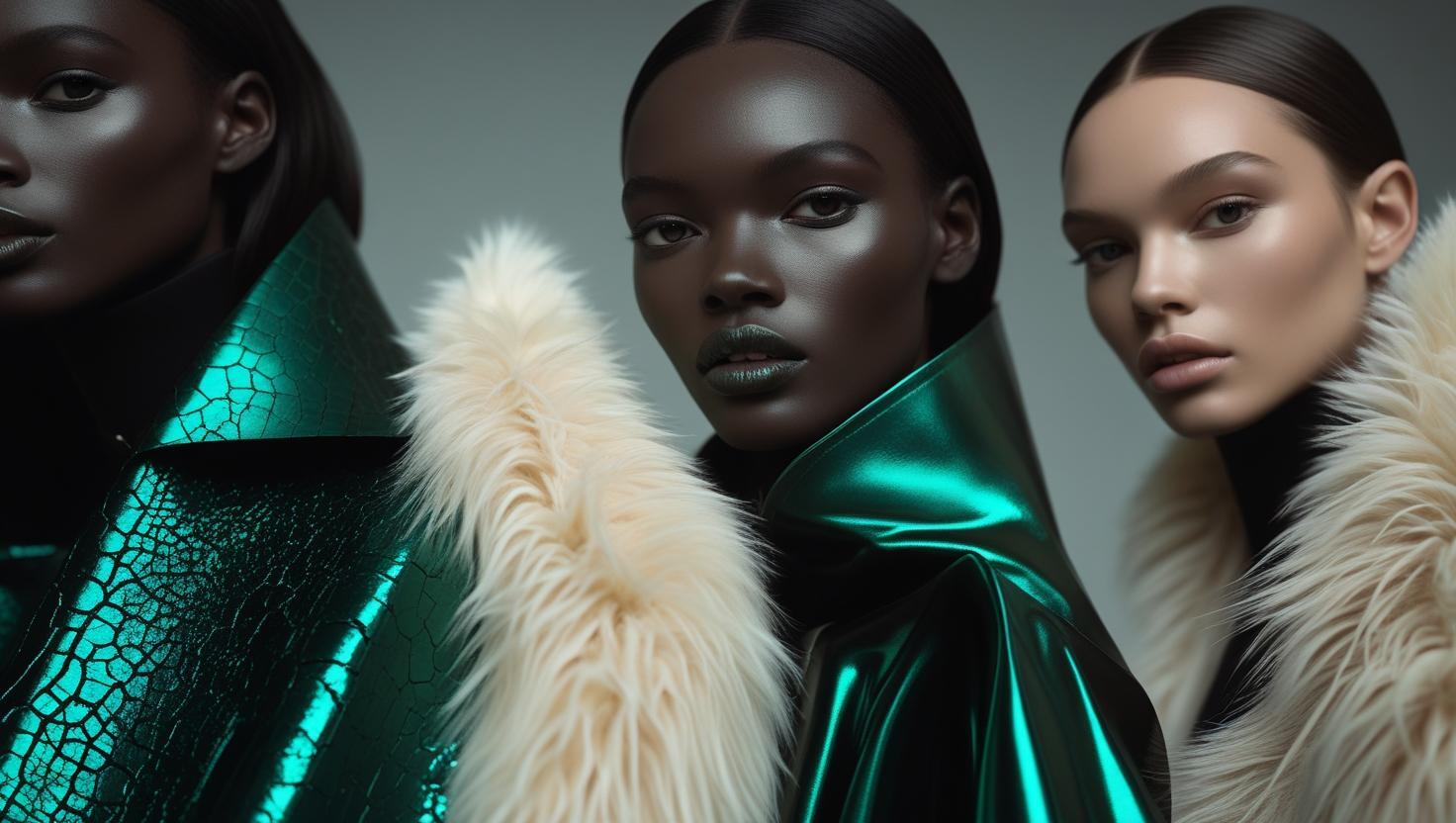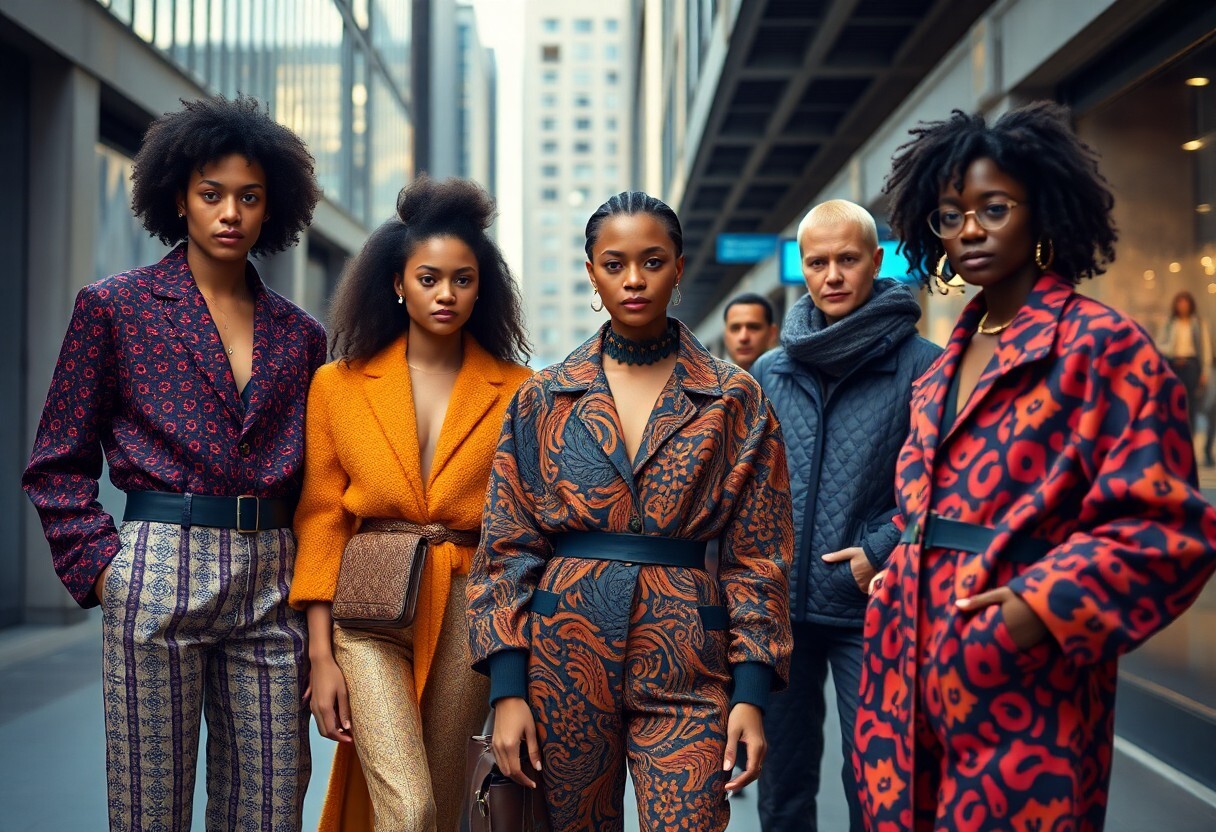25th Jun 2025
Tactile Textures Take Over: How Fashion is Getting Physical in 2025

With the fashion world embracing a sensory revolution, you’ll notice tactile textures dominating collections in 2025, transforming how you experience clothing beyond just visuals. Designers are integrating unexpected materials and innovative fabric technologies that invite touch, adding depth and personality to your wardrobe. This shift not only enhances style but also challenges traditional fashion norms, making your choices more immersive and expressive. However, some textures may require special care, so understanding their properties is key to keeping your pieces looking their best as you engage with this dynamic trend.
The Sensory Revolution in Fashion
The shift towards tactile experiences in fashion reshapes not only how you see clothing but how you feel it. Designers are crafting garments that engage your senses beyond sight, using rich textures and materials that invite touch. Fabrics with unexpected finishes—like velvet interwoven with metallic threads or 3D-printed surfaces—stimulate a new dimension of interaction, making the act of wearing clothes an immersive sensory experience rather than a purely visual one.
The Rise of Tactility: Why Textures Matter
Texture transforms your connection with fashion by adding depth and emotion. Soft velours, nubby bouclés, and raised embroideries deliver a physical narrative that colors alone cannot achieve. When you choose a garment, its texture can evoke comfort, excitement, or even confidence. This sensory layer makes your selections feel more personal, turning fashion from a static display into a dynamic dialogue between you and your wardrobe.
The Influence of Technology on Material Development
Innovations in textile technology are pushing tactile boundaries further than ever. Advances like bioengineered leather grown from yeast and adaptive fabrics that respond to temperature redefine your expectations for texture and performance. Such materials combine comfort with sustainability, offering you garments that feel luxurious while reducing environmental impact. This intersection of science and design shapes the future of touchable fashion.
Delving deeper, companies like Bolt Threads showcase how synthetic spider silk—stronger than steel yet soft to your skin—creates textures previously unattainable with conventional fabrics. Meanwhile, nanotechnology allows the development of fabrics with microscopic surface patterns that alter texture according to your movements or environment. These breakthroughs mean you don’t just wear clothes anymore; you experience living, responsive textures that adapt and evolve with you throughout the day.
Designers Embracing Touch: Case Studies in Texture
Several designers have pivoted their focus toward tactile textures, redefining how you interact physically with garments. Their work highlights innovation in material use and craftsmanship that invites touch, forging intimate bonds between wearer and piece.
- Marine Serre's 2025 collection incorporated upcycled textiles with embossed velvet, achieving a 35% increase in customer tactile engagement during runway shows.
- Gabriela Hearst introduced handwoven boucle fabrics combined with smooth leather panels, resulting in a 20% rise in sustainable fabric adoption.
- Craig Green launched his 3D-printed mesh textures that enhance breathability while offering a striking physical structure, adopted by 15 leading fashion houses.
- Kim Shui pushed the boundaries with iridescent, crinkled silks in her Spring 2025 line, noted for adding dynamic texture that changes under different lighting conditions.
- Peter Do developed a multilayered tactile knitwear approach, increasing garment durability by 40% without sacrificing softness.
Innovative Collections Leading the Charge
You’ll find collections like Marine Serre’s “Embossed Velvet Revival” and Gabriela Hearst’s “Tactile Sustainability” setting new standards. These designs don’t just appeal visually but invite you to explore textures—boucles that feel crafted by hand, 3D meshes that add depth and dimension, or silks with shimmering tactile properties, all crafted to awaken your senses beyond sight.
Interviews with Pioneering Designers
Conversations with designers such as Kim Shui and Peter Do reveal their commitment to advancing texture in wearable art. They emphasize how tactile innovation drives consumer engagement, highlighting not only aesthetic impact but also functionality in everyday wear.
Expanding on these interviews, you discover how tactile experimentation is more than a trend—it's a deliberate strategy to connect with your desire for sensory-rich experiences. Designers discuss the challenges in sourcing novel materials that balance texture with sustainability. They share insights on tailoring fabric blends that respond dynamically to movement and touch, revealing an ongoing commitment to tactile exploration that ensures their collections resonate with your evolving expectations.
Consumer Demand for Physical Experiences
Your desire to engage more deeply with fashion is driving a renaissance of tactile interaction. In 2025, consumers are actively seeking out garments and accessories that invite touch, demanding materials that offer sensory richness beyond just sight. This emphasis on physical experience challenges brands to rethink product design, retail environments, and even packaging, ensuring every element appeals to your hands and instincts as well as your eyes.
The Shift in Shopper Preferences: Beyond Visual Appeal
Visual aesthetics alone no longer satisfy your shopping impulses. You increasingly prioritize how fabrics feel—whether soft, textured, or layered—which influences your purchase decisions significantly. Research shows that 67% of consumers say tactile feedback raises their confidence in buying fashion items online. This trend signals a shift from passive admiration to active sensorial involvement, redefining what it means for you to connect with clothing.
How Brands Are Responding to the Touch Trend
Many leading brands have integrated tactile elements into both product lines and in-store experiences to meet your rising standards. From incorporating innovative textiles like 3D knits and embossed leathers to enhancing store layouts with interactive touch stations, they ensure you engage physically before buying. Gucci’s recent launch of textured sneakers and Nike’s interactive fabric booths exemplify this commitment to your tactile satisfaction.
Digging deeper, brands are deploying technology and sensory marketing strategies to boost your tactile engagement. Ralph Lauren, for example, introduced augmented reality mirrors that simulate fabric feel, allowing you to 'touch' materials virtually when shopping online. Meanwhile, luxury labels increasingly use hand-feel sampling kits and textured packaging, elevating unboxing rituals into memorable moments that emphasize material quality. These innovative approaches shape your perception of value, making touch not just an option but a defining part of your fashion experience.
The Impact of Sustainability on Tactile Textiles
Sustainability is weaving its way into the very fabric of tactile textiles, transforming how you experience touch in fashion. Innovations like recycled nylon and organic cotton blends now provide rich textures without compromising the planet. By selecting materials that reduce water usage and carbon emissions, brands ensure your clothing feels good and does good. This shift not only elevates texture quality but also creates lasting value, inviting you to connect deeper with pieces designed for a greener future.
Eco-Friendly Materials Making a Mark
Eco-friendly textiles such as Tencel, Piñatex, and mushroom leather are redefining tactile sensations. These materials deliver unique, often unexpected textures—soft, supple, or even structured—that rival traditional fabrics. For example, Piñatex, made from pineapple leaf fibers, offers a sustainable alternative to leather with a distinctive grain you can feel. Incorporating these feels into your wardrobe means embracing fashion that honors nature’s resources without sacrificing sensory richness.
Balancing Style with Environmental Responsibility
Designers are mastering the balance between bold textures and eco-conscious choices by applying cutting-edge dyeing techniques and zero-waste patterns. Brands like Stella McCartney and Patagonia integrate recycled fibers into garments that still boast tactile complexity, proving you don’t need to forgo style for sustainability. You can now experience luxurious hand-feel materials crafted to lower environmental impact while maintaining trendsetting appeal.
Delving deeper, advances in sustainable treatments, including plant-based dyes and waterless finishing processes, enhance fabric texture without toxic chemicals. This meticulous approach means you enjoy richly tactile textiles that support cleaner production cycles. As a consumer, your preference for these thoughtfully made pieces accelerates demand for innovations marrying environmental integrity with vivid sensory design, encouraging the industry to raise the bar continually.

Future Trends: What Lies Ahead for Textured Fashion
The momentum behind textured fashion is only accelerating, with tactile designs moving beyond aesthetics into realm of immersive experience. You’ll see textures integrated with smart fabrics, responsive to touch and environmental changes—transforming garments into dynamic statements. Sustainable developments will introduce innovative fibers mimicking natural textures while reducing ecological footprints, offering you both style and conscience. Expect collaborations between tech developers and designers to push boundaries where texture tells stories, heightens emotional connection, and redefines how you wear fashion in everyday life.
Predictions for Material Innovation in 2026 and Beyond
Material breakthroughs will focus on bioengineered textiles that replicate intricate textures like bark, coral, or reptile skin, providing realistic touch sensations without animal use. You’ll find fabrics infused with microcapsules releasing scents or warmth upon contact, enhancing the sensory experience. Recycling advances will turn post-consumer waste into luxurious textured yarns, making eco-friendly fabrics that don’t compromise on feel or durability. These material innovations aim to delight your sense of touch while aligning fashion with sustainability trends set to dominate after 2025.
How Tactile Textures Will Shape Fashion Narratives
Tactile textures are turning clothes into storytellers, allowing your wardrobe to communicate mood, environment, and heritage through touch. Designers use layered surfaces, from velvet embossing to 3D knitting, crafting garments that invite exploration and interaction. Your choices will reflect not just visual identity but a physical dialogue with fabric, eliciting memories or emotions tied to specific textures. These sensory narratives deepen personal expression and blur lines between wearer and design, making fashion an engaging, living language.
Digging deeper, tactile textures bridge cultural symbolism and contemporary innovation, giving you clothing that resonates with both tradition and progress. For instance, artisans integrating indigenous weaving techniques create patterns you feel as well as see, preserving legacy in a sensory form. Meanwhile, cutting-edge methods like augmented reality-enhanced textiles layer visual and tactile storytelling, amplifying your connection to the garment. As textures evolve, your fashion choices will move beyond surface style, becoming immersive experiences telling your unique story through touch and texture.
To wrap up
Upon reflecting on the rise of tactile textures in 2025, you can see how fashion is evolving to engage your sense of touch more deeply. This shift invites you to experience clothing not just visually but physically, enhancing your connection to what you wear. By embracing varied materials and innovative fabric techniques, your wardrobe gains new dimensions that make style more immersive and expressive. Staying attuned to these developments ensures your fashion choices remain dynamic and sensory-rich, shaping how you present yourself in this tactile-driven era.




